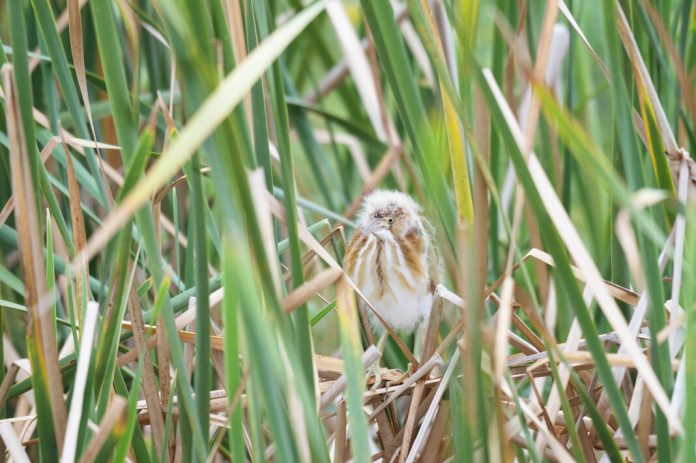
The Audubon Christmas Bird Count is the longest-running citizen-science project the world has known.
This year, birders are prepping for the 123rd Annual Christmas Bird Count, and as usual, the Rio Grande Valley will be a hotspot.
The global canvassing of bird species found in each area on a single day provides invaluable data on populations of individual bird species.
This year the Valley’s eight areas, known as circles, begin counting Dec. 14 with the Coastal Tip and proceed all the way up the Valley to Falcon Lake, ending on Jan. 4 with the Brownsville circle.
On the waterfront
Javi Gonzalez, naturalist educator at the South Padre Island Birding and Nature Center, will be leading the Coastal Tip team as compiler for the fourth year.
“Every Christmas bird count is different. It’s hard to know what to expect,” Gonzalez said. “The distribution of birds at wintering sites can change quite a bit year-to-year depending on the conditions out there. Sometimes the habitat is better some years than others, especially depending on rainfall and things like that. It was pretty dry for a good part of the summertime but we finally got a lot of rain a couple weeks ago, so hopefully that helps a bit to green things up.”
The Coastal Tip area consists of Laguna Vista, Laguna Heights, Port Isabel, South Padre Island and south to the Rio Grande.
McAllen, Hidalgo, Sharyland, Pharr, San Juan and Alamo are within the Santa Ana National Wildlife Refuge Circle.
Other count circles in the Valley are centered in Weslaco, the Laguna Atascosa National Wildlife Refuge, Anzalduas-Bentsen Rio Grande Valley State Park, Harlingen, Falcon Dam and state park and Brownsville.
Individuals can even count birds in their own yard within one of the designated areas. Contact a team compiler to find out if your yard is within a designated area.
“They can count birds whether from their backyard or their neighborhood, or I can assign them to different places according to their skill level,” Gonzalez said. “If you’re on the Coastal Tip Christmas bird count, it has some of the highest species diversity in the state. …
“It’s mainly a coastal area, lots of shoreline, so we’re seeing shorebirds and wading birds and some of the little sandpipers can be tricky to identify,” he added. “When we split these up, some people will have good shorebird ID skills to cover those sorts of spots. It has to be strategic how I place people.”
Anzalduas-Bentsen
Roy J. Rodriguez is park ranger/lead interpreter at Bentsen-Rio Grande Valley State Park, and the ecosystem and the birding both are different there.
Rodriguez is the Audubon Christmas Bird count compiler for an area that stretches 15 miles across, from inside Mexico to the Rio Grande and points north.
“Right now our park at Bentsen is really popular because we’ve got a few things nobody else has and so everybody’s coming to see them,” he said. “The hook-billed kite is like a raptor that lives in this area and eats snails and it’s really hard to find.
“They’re all over the tropics, but in the U.S., they only exist along the river and specifically around Bentsen and Anzalduas,” he added. “The snails have been emerging and they’re specialists in eating those little snails, and they’re all over the place, like four or five of them that people are seeing in the park,” he added.
Rodriguez said the small snails only emerge periodically, spurred out of their underground ecological niche by the five or six straight days of recent rains. When the ground becomes waterlogged, the snails have to move above-ground to avoid drowning.
And that’s when the hook-billed kites strike.
“It’s a big deal because they’re the Holy Grail of Valley birds,” he said.
The Christmas bird count in Rodriguez’s section is Dec. 30, and he doubts the snails and by extension the rare kites will still be around.
“We also have another thing that’s hanging around, it’s called the rose-throated becard and there are three of them,” Rodriguez said, referring to a little flycatcher. “There’s only ever one on the Valley through the year, if any.
“So three becards and five hook-billed kites, that’s got us on the map right now and right now we’re basking in that popularity. So we get it while we can,” he added. “But birds come and go of their own free will so it’s not like we can do very much to keep them or attract them.”
Last year’s score
Last year, Texas birders conducted 103 Christmas regional bird counts and reported 384 species, including relative rarities like the ruddy ground dove, mew gull, elegant trogon, Pacific-slope flycatcher, dusky-capped flycatcher, rufous-backed robin, painted redstart, blue bunting, spotted rail, rose-breasted becard, Hammond’s flycatcher, hermit warbler, blue grosbeak and orchard oriole.
Nine species occurred in at least 95 of the 103 Christmas bird count regions in Texas last season. Five made the century mark.
The red-tailed hawk was found in all 103 Texas CBCs. The northern mockingbird and ruby-crowned kinglet were the next most-represented, occurring in 102 CBCs. The mourning dove occurred in 101, the northern cardinal in 100, the American kestrel and savannah sparrow in 98, the great blue heron in 96 and the killdeer in 95.




